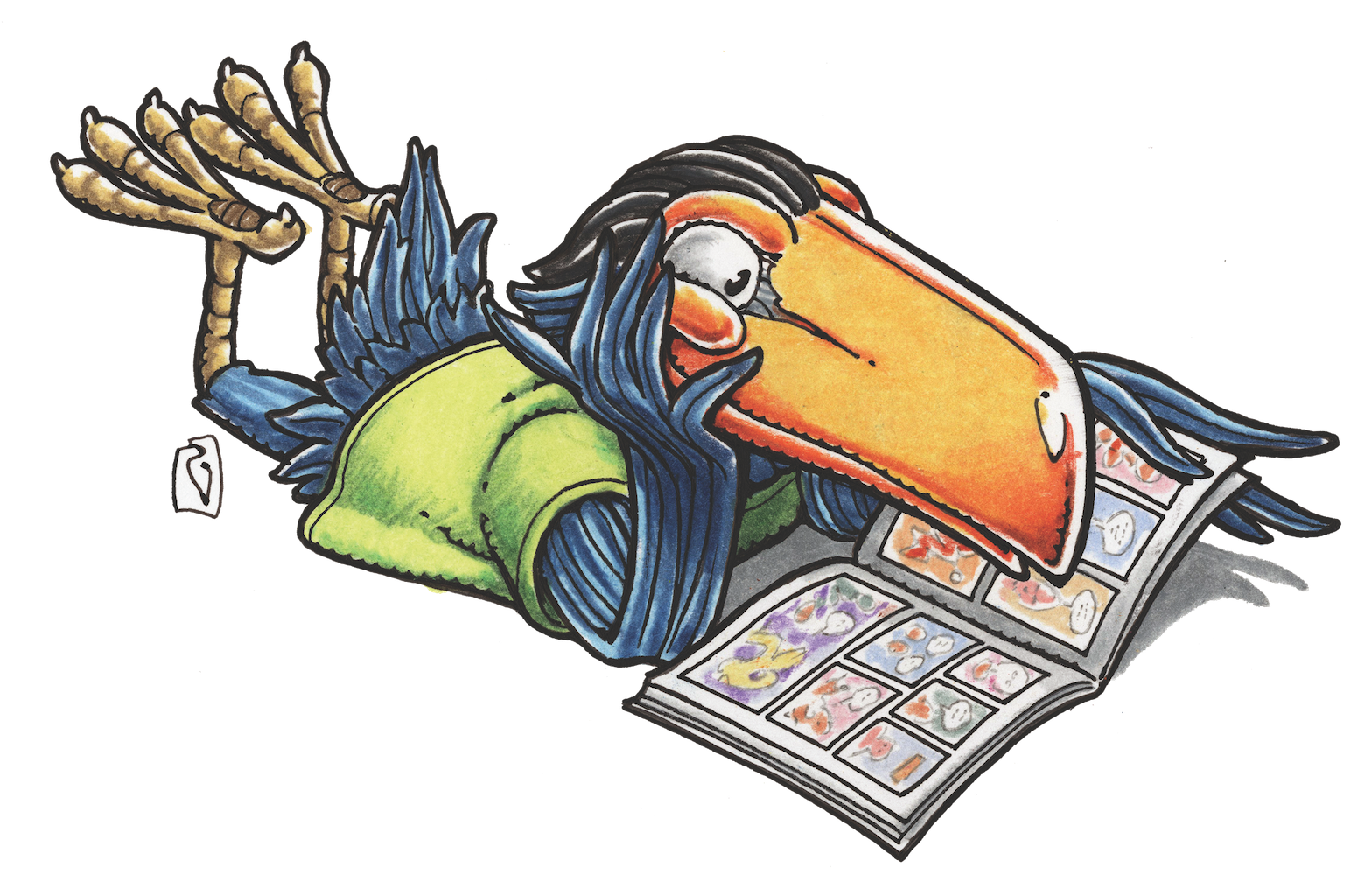STEVE LIEBER’S DILETTANTE
Dilettante 027: Why I Went Digital


I’ve been drawing professionally for more than 20 years now, and one of the greatest pleasures for me has always been the physical act of drawing on paper.
I love sharpening a 2H graphite pencil and dragging it as lightly as possible across a page when I’m doing my layouts, then shifting to a softer, darker HB lead to tighten the page into pencils. It’s so satisfying to block in simple shapes, then draft a perspective grid to help build a detailed background, knowing that every element is placed firmly in position. There’s nothing like dipping a Winsor & Newton series 7 #2 brush into a bottle of India ink, twirling the brush into a perfect point, and laying down a juicy inkline. And it’s a real delight seeing clean, finished lineart emerge as you take a white vinyl eraser to the page.
So of course I’ve largely abandoned traditional media in favor of working digitally.
This has been a gradual process. Over the past decade, step by step, I’ve incorporated more and more digital tools into my workday. But in the past few years, I’ve become comfortable creating my pages without any analog element, to the point where I can imagine never going back. A big part of that was the arrival of Manga Studio 5. I had tried an early version and couldn’t understand the interface at all. Manga Studio 5’s interface is much more like the Photoshop environment I’d been using for years, and I was able to get useful work done with it within 30 minutes of starting it for the first time.
Now I had done plenty of digital drawing in Photoshop before, but it was never particularly satisfying. Photoshop’s brushes never yielded anything I liked to draw with, and even after years of practice, it took a lot of work to make drawings that felt like a product of my own hands. Manga Studio’s brushes felt natural from the start.
Once I had a program that let me easily put down lines I like, all the other advantages of working digitally fell into place.
Easy Corrections
This is one of the biggest ones, and even the most die-hard traditional media advocate gets how appealing it is to be able to save versions and hit the UNDO button. Want to try turning that lushly detailed figure into a silhouette? On paper if it doesn’t work, you’re out of luck. Working digital? Just undo.
I’ve found that I’m generally a lot more fearless about drawing now. I spend less time working things out at the “pencil” stage. If the first line I put down to describe a figure does the job, I don’t have to go back over it in ink. That line stays and becomes part of the final page.
Drawing with White
Take the word of a guy who penciled, inked and hand-lettered more than 200 pages of a black and white comic set in Antarctica; drawing with white is a pain. White inks and paints are unreliable and inconsistent. If it’s thin enough to flow from a brush, it won’t cover. If it’s thick enough to cover, it’s like drawing with cooked oatmeal. But in the digital realm, white is just as easy to work with as black, opening up all sorts of interesting possibilities for graphic mark-making.
Zooming In
This advantage of digital drawing is just going to keep getting more important to me as I age. I’ve found over the years that it’s really difficult for me to keep small figures well constructed and in good proportion. It’s hard to keep something that small in focus, and it’s hard to keep errors out of your drawing when a millimeter’s hand movement can ruin your main character’s expression. That didn’t matter so much when comics were only read on paper. Your one-inch drawing of a character was going to be reduced to 2/3rds of an inch, and would never be seen any other size. These days, Comixology’s guided view might display every panel on a nine-panel page as a full-screen image and your tiny figures will get a lot more scrutiny. Fortunately, now you can zoom in to get them right. It’s a pretty sweet deal: less eyestrain, less carpal-tunnel, more accuracy.
The Flip
Some artists are able to instantly spot their errors. Others have relied on an old trick. Hold the page up to a mirror, or flip it over on a lightbox and look at the page backwards. The page becomes instantly unfamiliar, and you’re able to see it with fresh eyes. Previously unnoticed errors are made visible. Great! But then when you want to correct them, you have to flip the page back to normal and all the stuff you need to correct hides from you again.
Digitally, it’s one click to flip a page. You make your corrections while it’s flipped, then flip it back.
Never Erase, Never Scan
Two mundane parts of the job. Erasing doesn’t feel like it should take much time or energy, but it does. Try inking 20 pages at once to get a sense of how much time you’re spending every month pushing an eraser, then multiply that times 12 and you’ll see how much time was just being lost. And sometimes you erase too hard and your inklines fade to the point where they won’t reproduce, and you have to go back and re-ink the something. That’s more time lost.
And scanning? Do I need to explain why not having to scan is an advantage? I don’t think there’s anyone in comics who gets up and thinks, “Wow, I can’t wait to sit and watch my scanner slowly crawl over a page at 600 dpi. That’ll be sweet.”
Nothing to Carry Around
I have a computer in my home office and another at Periscope Studio. My digital files are synced in Dropbox between the two machines, so I can start a page on one machine and finish it on another without having to carry original art back and forth between studios. Dropbox also serves as an off-site backup, which has saved me plenty of trouble over the years.
Easily Incorporating Reference and Preparatory Sketches
It’s a dirty secret, but tracing is a big part of the toolbox for most commercial artists. In the pre-digital era, we used lightboxes and opaque projectors; lightboxes if the reference or sketch was already the right size, opaque projectors if it wasn’t. They were good tools, but not great. In the digital realm it’s effortless to flip that photo I took of a motorcycle and put it where I need it, and I can instantly resize that figure with the perfect pose I’d doodled in my sketchbook, and then I can ink them both right on the page.
The Perspective Ruler
Manga Studio’s perspective ruler is magic. You turn on the ruler and place a few lines in the perspective you want. Suddenly every line you throw down snaps to the appropriate vanishing point, and you can focus all your energy on what needs to be in your panel instead of the grunt work of getting everything to look right.
That’s a few of the reasons I’ve gone digital. Do I have any regrets? I still love those traditional tools. Even though I recognize that I can do better work with less effort now that I’m a digital artist, I still miss having produced a page of original art at the end of a workday. But I say this knowing that that workday used to be a lot longer and frequently more frustrating. I didn’t get into comics to create a pile of original pages to stick in a drawer or to sell at conventions. I make comics digitally because it keeps me focused on what matters—telling stories.
Steve Lieber’s Dilettante appears the second Tuesday of every month here on Toucan!